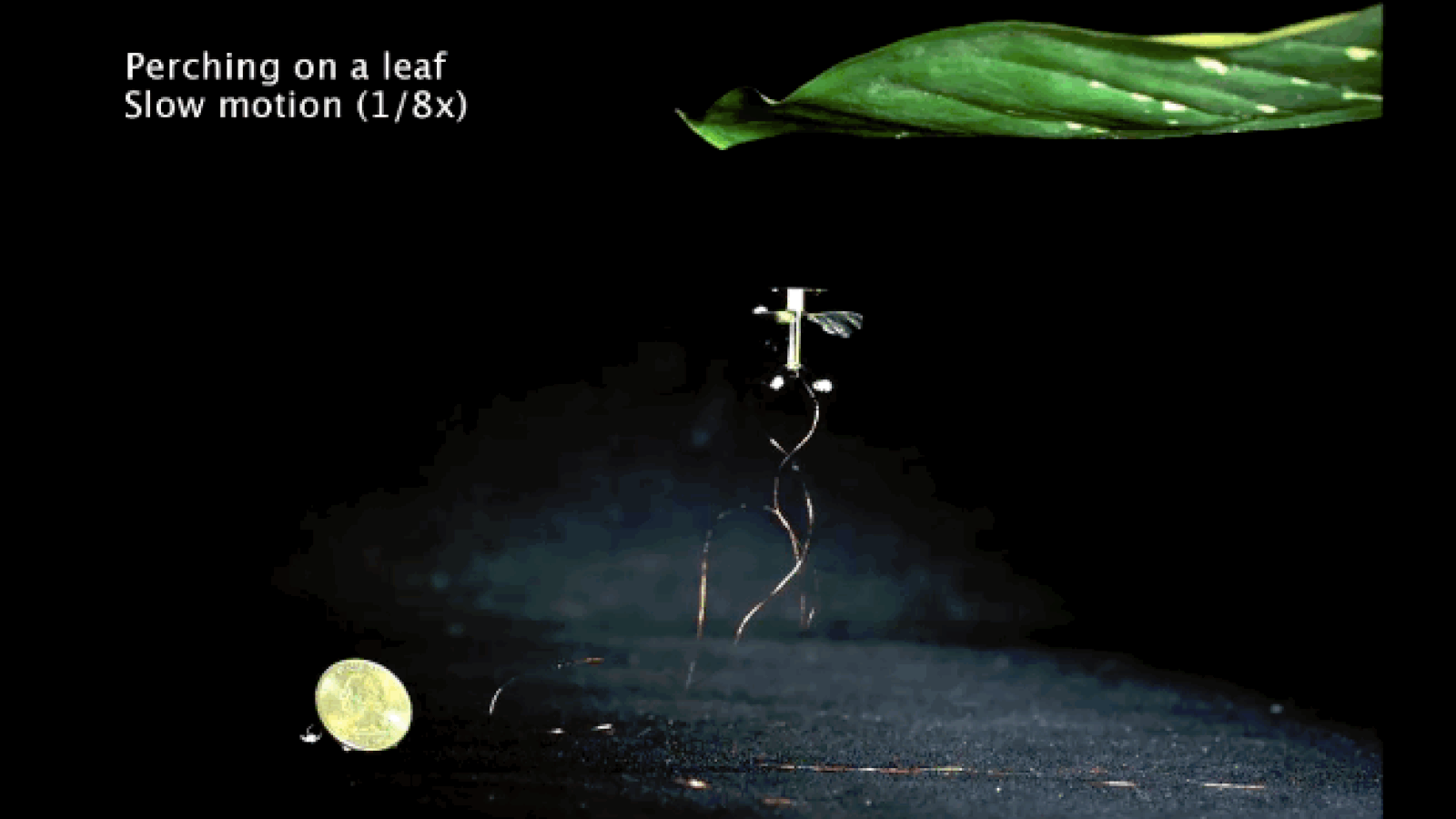 From The Verge:
From The Verge:
In a study published in this week’s issue of Science, researchers say this new perching ability could be key to creating insect-sized aerial robots that can help with a long-term observational tasks — traffic
The mechanism was developed by researchers from MIT for the RoboBee: a tiny flying robot first unveiled in 2013. The RoboBee weighs just 0.08 grams (that’s 31 times lighter than a penny), and has a pair of tiny wings that can beat up to 120 times per second. Previously, the bot relied on miniature tripod on its base for landings — but that meant it could only set down on the top of flat surfaces. The new mechanism will instead let it fix onto the underside of pretty much any material, including leaves, glass, wood, and brick.
The electrostatic pad itself sits on the top of the RoboBee, making it look a little like a rubber dart, and is connected to the bot via a polyurethane mount that’s essentially a squidgy ear plug. This allows the circular contact to bend and flex, meaning the microrobot can approach its target surface at an angle, rather than having to line exactly parallel.
The static electricity that is used to stick the bot to its target is the same force that makes a balloon attract your hair after you’ve rubbed it on a sweater. An electric current is run through the circular pad to create the charge, and when it touches the target surface, it induces the opposite charge there, creating electrostatic attraction between the two materials. Voila: the robot sticks in place.
An illustration of how the Robobee attaches to a target surface. The circular pad is the electrostatic mechanism and the yellow cylinder is the polyurethane mount. (Image credit: Science)
This might seem like an unnecessarily complex mechanism to use, but it’s ideal for a bot the size of the RoboBee. Because the electrostatic attraction can be turned on and off, the robot doesn’t need to pull itself away from any surface, as it might with a chemical adhesive. (Just think of flies stuck in fly paper!) Maintaining the charge also takes very little power — 500 to 1,000 times less power than flying.
In his essay, Kovac describes how animals of different sizes use different methods to perch, and how the same lessons can be applied to robot design. Large birds have to use visual feedback and the precise deployment of talons to grip on to something, writes Kovac, while smaller insects like flies, meanwhile, simply run into something and the design of their bodies allows them to stick in place. (In the case of flies, this "stickiness" comes from a huge number of tiny bristles on their feet that work like velcro.)
You can’t scale down mechanical grips to the micro-level, Kovac tells The Verge, so you have to find some sort of passive mechanism. "Nature is very good at this sort of embodied intelligence," says Kovac. "And as you get smaller, you have to rely more and more on this sort of smart design." This also means there’s less computation involved, which means you don’t have to burden the robots with too many sensors or hardware to control them.
/cdn0.vox-cdn.com/uploads/chorus_asset/file/6510639/Screen_Shot_2016-05-19_at_5.23.32_PM.0.png)
Comments
@ Maxime,
Great idea, sadly these early devices are not at all energy efficient so you would likely need to provide a high power RF transmitter to power them.
Still with a little work, that could be useful, I can almost see Tesla smiling down on us from above.
Best,
Gary
@Gary ambient power may come in!
Really great article Chris,
Definitely points out how when you get down to this scale all the rules change.
First wings, now electrostatic adhesion.
Now if only they can figure out a way to power them on board.